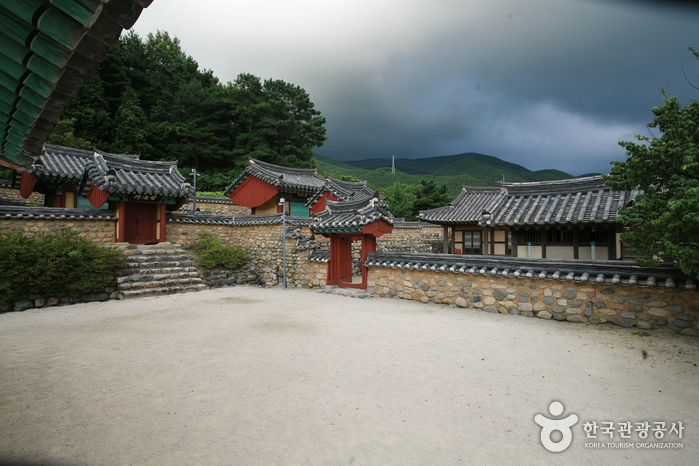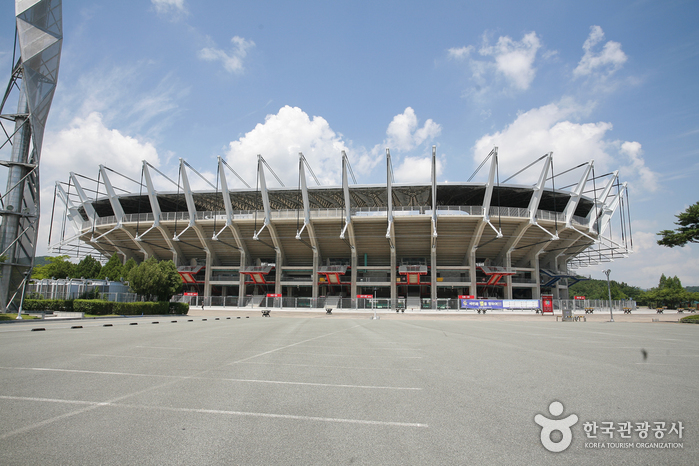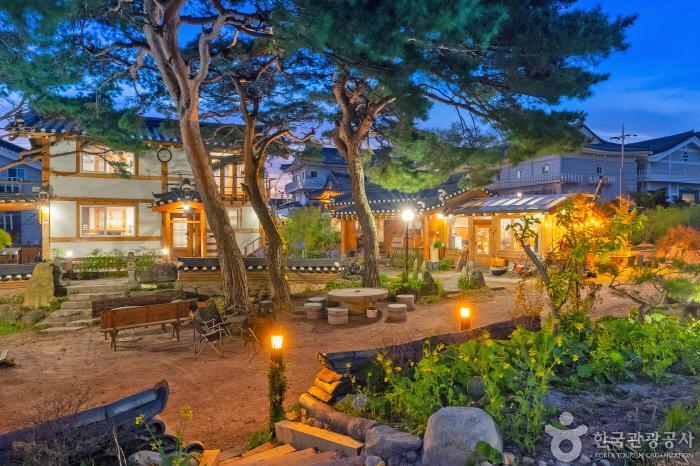NUMARU (누마루)
18.2Km 2021-03-23
2, Daehak-ro 169beon-gil, Nam-gu, Ulsan
+82-52-224-3400
It is a place that has been introduced in Korean gourmet programs and sells various healthy dishes. This restaurant's signature menu is duck bulgogi. This Korean dishes restaurant is located in Nam-gu, Ulsan.
GS25 - Ulsan Shinbok Branch [Tax Refund Shop] (GS25울산신복점)
18.7Km 2024-06-26
12, Sinbok-ro 21beon-gil, Nam-gu, Ulsan
-
Olive Young - Ulsan Guyeong Branch [Tax Refund Shop] (올리브영 울산구영점)
18.8Km 2024-06-27
#108~#110, 78, Guyeong-ro, Beomseo-eup, Ulju-gun, Ulsan
-
Chisanseowon Confucian Academy (치산서원)
18.9Km 2020-02-05
7, Chisullyeong-gil, Dudong-myeon, Ulju-gun, Ulsan
+82-52-204-0324
Relics of Park Jesang is also referred to as Chisanseowon Confucian Academy.
Park Jesang, a descendent of Park Hyeokgeose, was severly tortured and then burned to death after rescuing two hostages taken by Japan, who were the brothers of King Nulji.
The nearby temple and Mangbuseok have a folk tale regarding the story. His wife and two daughters died waiting for him and then his wife is said to have turned into Mangbuseok (faithful wife stone) in the eastern Chisullyeong Mountain in Manhwa-ri, Dudong-myeon. According to the legend, her spirit became a bird, and flew away to hide behind Euneulam (Bird Hidden Rock).
After Park Jesang's couragous act, King Nulji gave him a loyal officers position as well as the role of godmother to his wife for her model behavior of wifely duty. Chisanseowon Confucian Academy keeps their ancestral tablets to honor royalty.
Gyeongju Seokguram Grotto [UNESCO World Heritage] (경주 석굴암 [유네스코 세계유산])
19.2Km 2025-06-12
238 Seokgul-ro, Gyeongju-si, Gyeongsangbuk-do
+82-54-746-9933
Seokguram Grotto was constructed by Kim Dae-Seong during the reign of King Gyeongdeok (742-765) of the Silla Kingdom. Located 3 kilometers away by hiking trail and 9 kilometers by car from Bulguksa Temple, the grotto was designed very harmoniously with the seated Buddha facing the East Sea. It is a valuable cultural heritage that is preserved and registered as a UNESCO World Heritage on December 6, 1995.
Seated Rock-carved Buddha at Golgulam Temple (경주 골굴암 마애여래좌상)
19.3Km 2022-12-28
101-5, Girim-ro, Gyeongju-si, Gyeongsangbuk-do
+82-54-744-1689
The Seated Rock-carved Buddha at Golgulam Temple consists of a Maebul (a Buddha carved in a cliff) at the very top of 12 Buddha images carved in natural rock caves located in a steep cliff of Girimsa Valley. A painting of the caving titled "Golgulseokgul" by Gyeomjae Jeongseon, a famous painter of the era, revealed that there was once a wooden room located in front of the Maebul, but today only a hint of the room remains on the rock. The head of the Buddha (Yukgye) is perched solid and high on the body with a clear profile of the face – sharp eyes, small lips and a long and narrow nose. In contrast to the three-dimensional face, the body is broader and flatter. The neck and upper chest sections have eroded over time. The folds in the clothing are nearly parallel, and the arm area has a v-pattern wrinkle, giving it a more realistic and three-dimensional quality. Around the head of the Buddha is a lotus-shaped halo, while the body is surrounded by a rhythmic flame-like halo. The Maebul is believed to have been created during the late Unified Silla Kingdom, as it shows similar craftsmanship to Seated Stone Vairocana Buddha (National Treasure), which was created in the year 876 and is located in Chukseosa Temple.
Ulsan Munsu Football Stadium (문수축구경기장)
19.3Km 2021-05-26
44, Munsu-ro, Nam-gu, Ulsan
+82-52-220-2002
Ulsan Munsu Football Stadium’s exterior design looks like a crane, which represents the bird of Ulsan. The design of the roof and the pillars represents the youth and dynamics of the city. Other representative symbols include a whale and big crown of the Silla dynasty.
Bulguksa Hanok Dongodang (불국사한옥동오당)
19.5Km 2024-07-25
5-58 Jinti-gil, Gyeongju-si, Gyeongsangbuk-do
010-2936-6350
Bulguksa Hanok Dongdodang is just a short five-minute walk from Bulguksa Temple, and is complete with a large parking area, clean & quiet surroundings, a cafe-like shared kitchen, and friendly service. The hanokstay is decorated with artwork made by the owner. The accommodation manages to offer a comfortable and private ambiance with just three rooms, each comprised of a bedroom, living area, bathroom, and small outdoor patio.
Gyeongju Golgulsa Temple (골굴사(경주))
19.5Km 2025-05-21
101-5 Girim-ro, Munmudaewang-myeon, Gyeongju-si, Gyeongsangbuk-do
Golgulsa Temple is a temple located within the Hamwolsan Mountain, situated between Gyeongju City and the East Sea. With a history of over 1,500 years, it houses many Buddha statues preserved within its twelve grottoes. Maintaining the tradition of Korean Buddhism's practice of Seonmudo, visitors can witness Seonmudo performances. Additionally, there are templestay programs available, offering opportunities to experience Korean temple culture.
Bulguksa Hanok Farm Stay (불국사한옥팜스테이)
19.5Km 2024-12-13
5-52 , Jinti-gil, Gyeongju-si, Gyeongsangbuk-do
+82-10-5489-1742
Bulguksa Hanok Farm Stay is an accommodation located just below Bulguksa Temple in Gyeongju-si, Gyeongbuk-do. There are four guest rooms, each of which is equipped with a bathroom and kitchen. Ouga is a two-story ondol hanok, with the first and second floors used as guest rooms, and there is a terrace where you can cook barbecue. Bokyeonga offers two guest rooms for accommodation, both of which are ondols (underfloor heating). There is a well-kept garden and a lawn with a foot volleyball field, and guests can participate in apple picking and farm-themed activities.




 English
English
 한국어
한국어 日本語
日本語 中文(简体)
中文(简体) Deutsch
Deutsch Français
Français Español
Español Русский
Русский